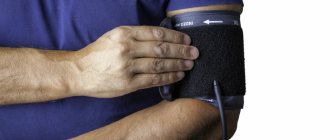Types of hand tremors
Tremors are classified according to the cause of their occurrence:
- physiological (hand vibrations inherent in every person, not causing concern, often provoked by stress, anxiety, giving up bad habits, diseases with similar symptoms)
- essential (tremor, indicating disturbances in the functioning of the nervous system, often at the genetic level, usually mild, but quite noticeable, possibly causing inconvenience when writing)
- cerebellar (caused by lesions of the cerebellum, one of the symptoms of multiple sclerosis - replacement of nervous tissue with connective tissue in different parts of the central nervous system)
- secondary (side effect of a drug, symptom of another disease)
There is a classification of the disease according to the time of occurrence:
- resting tremor, occurs when there is no movement
- action tremor associated with hand movements
Causes of limb tremors
Tremor of the limbs can be physiological or pathological. Physiological tremor is not very pronounced, less noticeable than pathological.
Pathological tremor of the limbs is a symptom of more severe diseases of the nervous system or brain cancer. Among the main causes of tremor are:
Osteochondrosis. Due to pinching of the spinal nerve fibers, circulatory and nutritional disorders occur. Along with tremor, swelling of the face and cardiovascular disorders often appear;
- Alcohol and drug addiction. Taking excessive amounts of alcohol or medications can cause tremors;
- History of trauma. Damage to the nerve roots due to trauma is often reflected in the form of tremors;
- Dysfunction of the central nervous system. The tremor may begin as mild twitching. As the condition worsens, the severity of the symptom increases;
- Psycho-emotional experience. Most often, tremors due to stress occur in infants. This is a variant of the norm if the symptom appears sporadically.
- Excessive mental stress. Worries teenagers or students during exam periods. If severe headache, loss of coordination, aggression or apathy appear along with tremor, you should consult a doctor;
- Degenerative changes in the brain. Diseases such as Parkinson's disease and dementia can be accompanied by tremors. You can control the severity of symptoms with the help of medications that are selected by your doctor.
Depending on the severity of the disease, the frequency and amplitude of limb tremors may vary. If such symptoms are ignored, the consequences can be extremely severe and pose a threat to human life.
Causes of hand tremors
There are enough types of the disease being studied, but the causes can be combined:
- chronic fatigue
- lifting heavy objects
- side effect of medications
- blood sugar problems
- hormonal imbalance
- depression, anxiety, worries
- bad habits (smoking, alcohol, drugs)
- stroke, multiple sclerosis, Parkinson's disease, traumatic brain injury, etc.
Leg tremors
Leg tremors are usually a nonspecific pathology that leads to serious disorders in humans. This symptom becomes the first signal about the possible presence of a disease and requires a thorough diagnosis and consultation with a doctor.
If, after a detailed diagnosis, pathological abnormalities are discovered, then long-term and high-quality treatment is required. Treatment of leg tremor with a pathological deviation requires increased responsibility, namely:
- in mild forms of the disease, the patient is advised not to be in uncomfortable positions, the presence of objects near the body is undesirable, and things should not be squeezed tightly when grasping.
- small doses of alcohol can help eliminate shaking. But you should not overdo it, since alcohol in large doses, on the contrary, will increase the tremor.
- if the disease interferes with a person’s everyday life and normal pace of life, medications are prescribed, namely beta blockers. They reduce the amplitude of trembling of the arms and legs, and sometimes completely eliminate this symptom.
- Surgery is done only in extreme cases when tremors interfere with a person’s normal functioning. (For example, the patient cannot eat on his own.) The operation is performed by stimulating the cerebellum with electric current.
Previously, it was impossible to get rid of pathological tremor. But now, thanks to modern medicine and medications, it is possible to significantly reduce tremor and improve the patient’s standard of living. You can make an appointment with a neurologist by calling the Yusupov Hospital.
Doctor who treats tremors
Most often, a neurologist will help solve this problem, since in most cases hand tremors are caused by disturbances in the functioning of the central nervous system. Qualified, experienced doctors at the Kuntsevo Medical and Rehabilitation Center will competently select a course of treatment suitable for different cases of hand tremors. Thanks to our center’s own diagnostic facilities (MRI, ultrasound, Electroneuromyography, etc.), the patient will be able to see doctors and begin recovery immediately, which is important for any disease.
IMPORTANT! Hand tremors are a neurological problem that requires intervention by a qualified professional. Self-medication of tremor will not lead to a successful result; moreover, you can worsen your own condition, because the patient does not know at what level of functioning of the nervous system the “error” occurred.
Therefore, make an appointment with a neurologist at the Kuntsevo Treatment and Rehabilitation Center, who, thanks to his own experience, the wide diagnostic capabilities of our center, prescribing the correct treatment tactics and rehabilitation program, will help you eliminate the causes of hand tremors.
Sign up
Diagnosis of tremor
To make an accurate diagnosis, you will need to undergo a series of examinations. The process is easily accelerated if the patient guesses what exactly triggered the disease, for example, when he admits to alcohol abuse or long-term smoking.
Otherwise, blood tests describing the state of the endocrine system, CT and MRI of the brain, examination by a neurologist, and even a conversation with a psychiatrist may be prescribed.
Genetic testing may be performed to identify a hereditary predisposition to limb tremors. In this case, only symptomatic therapy will help.
Treatment methods
With cerebellar tremor, it is recommended to load the affected limb with weight, and medications will not help in this situation.
Physiological tremor, which does not cause concern, does not require treatment, you just need to avoid the supposed pathogens (caffeine, alcohol, anxiety). In case of inconvenience and the need for treatment, the use of propranolol in a dose of 20 to 80 mg 4 times a day will be effective.
Essential tremor can be treated with the same medications that can be used for irritating physiological tremor; another option is to take a small amount of alcohol, but this method is used occasionally due to the risk of abuse.
Parkinson's disease is treatable, and levodopa (a metabolic precursor of dopamine) is a drug that combats this disease.
Thus, drug treatment is widely used for types of hand tremor other than cerebellar, and physiological tremor in most cases will be stopped by consultation with a neurologist.
The Kuntsevo Treatment and Rehabilitation Center uses SMT therapy, also known as electrotherapy, which affects the nervous system and muscles. All treatment procedures are carried out by experienced specialists, and the technical equipment meets international quality standards.
The following procedures will help solve problems with the nervous system: drug therapy, manual therapy, massage, acupuncture, electropuncture, laser treatment, ultrasound therapy.
Tremor degrees
Determination of the degree of tremor is required to establish the severity of the disease. Based on this criterion, the need to prescribe one or another therapy is judged. Tremor is divided into:
- Minor. Rare attacks that recur at regular intervals. The symptom does not affect the patient's quality of life.
- Moderate. Tremor prevents small movements. In this regard, the quality of life and ability to work decreases.
- Significant. A pronounced pathological symptom is the cause of disability. The patient cannot care for himself due to lack of control over movements.
Recommended Lifestyle
At the moment there are no specific methods of prevention. General recommendations include a healthy lifestyle, proper nutrition, regular preventive examinations with a doctor - all this will help get rid of the annoying disease forever.
So, there are several types of hand tremors, but each of them can be overcome with the help of competent treatment, which is provided by the Kuntsevo Treatment and Rehabilitation Center. In order for rehabilitation to proceed quickly, you must follow the doctor’s instructions and lead a healthy lifestyle.
Antidepressants as a treatment for tremors
Antidepressants are strictly prescription drugs. Uncontrolled use can cause a number of other problems, so it is important not only to get a prescription for the drug, but also to regularly visit your doctor to assess the dynamics of the condition and its control.
Such medications are used when a person has experienced an irreparable event that has greatly changed their life. Often the mental state is disturbed after the death of someone close, revealed betrayal, or as a result of loss of housing. Emotional people find it difficult to cope with stress, which is why they develop various mental disorders due to their experiences. Antidepressants help a person cope with stress and restore a normal lifestyle. Often these medications are taken simultaneously with a visit to a psychotherapist.
Conventionally, all antidepressants can be divided into two groups:
- Medicines that help cope with hyperactivity, normalize sleep and relieve obsessive anxiety.
- Medicines that help get rid of apathy and restore interest in life.
Due to the fact that hand tremors are predominantly a problem of high excitability and nervous condition, medications from the first group of antidepressants are most often prescribed to get rid of it.
Symptoms of limb tremor
As already mentioned, tremor of the upper and lower extremities can be a physiological or pathological manifestation. Physiological tremor goes away on its own after eliminating the irritating factors. Physiological tremor appears during stressful situations, physical activity, and the patient is bothered by trembling of the arms or legs. This condition does not last long and goes away when the person comes to a state of rest. This symptom is the body’s response to stress and goes away without the help of doctors or medications.
Tremor of the limbs can appear at rest, as well as during active movements. For example, when holding an object in front of you, straightening your arms, or performing small precise movements, the tremor of the limbs is especially pronounced. Also, prolonged muscle contraction increases the symptoms of tremors in the limbs. Tremor of the limbs in people who abuse alcohol manifests itself in the form of shaking, often in the morning, and goes away after a certain time. Some medications can also cause tremors in the limbs, which disappear after treatment ends.
The manifestation of limb tremors is enhanced by factors such as alcohol abuse, strong coffee, psychological stress, the transition period and other disorders in the body.
How to learn to relieve muscle spasms during neuroses with exercises
Muscle tension goes away when a person engages in meditation or autogenic training. They are associated with a psycho-emotional impact on the entire body. Another direction of working with muscles during neurosis is physical exercises that teach a person to voluntarily relax them. Often people don't even notice how long and how intensely their muscles are tense in everyday life.
Methods have long been developed that teach one to recognize sensations of tension and relaxation, so that in the future a person can, through an effort of will, achieve the desired state during a neurotic attack. For example, progressive muscle relaxation or a method of post-isometric relaxation, which are based on the fact that you can feel relaxation only after strong muscle tension.
Yoga also helps to understand how to relieve stress during neurosis. Exercises must be carried out in a calm environment so that nothing prevents the patient from focusing on his own sensations.
Diagnostics
The cause of hand tremors can be identified based on the results of a comprehensive examination. At the initial stage, a neurologist correlates clinical symptoms with diagnostic criteria and makes a preliminary conclusion, but it is almost impossible to determine the source of disorders without additional research. For trembling hyperkinesis, the following procedures are recommended:
- Laboratory tests.
To exclude endocrine diseases, a spectrum of hormones (thyroid, corticosteroids, insulin) is examined. In a biochemical blood test, renal tests (urea, creatinine), acute phase indicators, and ceruloplasmin concentration are assessed. Toxicological examination helps to identify harmful substances; in case of neuroinfections, serological diagnostics and cerebrospinal fluid analysis are performed. - Tomography.
Signs of focal or diffuse damage to the central nervous system are an indication for performing a CT or MRI of the brain. Neuroimaging methods are used to diagnose tumors, hematomas, and strokes. In hereditary diseases, cerebellar atrophy and demyelination of the white matter are determined. PET-CT indicates the localization of functional disorders. Vascular involvement is confirmed by MR angiography. - Tremorography.
To assess the activity of antagonist muscles, tremorography with accelerometric or electromyographic recording methods is used. According to EMG data, the frequency and pattern of contractions, the influence of cognitive load are determined, and the presence of a central oscillator is assumed. A neuromuscular conduction block indicates the presence of neuropathy.
Some authors propose to study the time-frequency properties of EEG signals to diagnose the early stages of Parkinson's disease. In case of endocrine pathology, ultrasound of the thyroid gland and adrenal glands is prescribed; displacement of the midline structures during volumetric processes can be seen using echoencephalography. The doctor has to differentiate between various diseases accompanied by tremor, and distinguish it from other hyperkinesis.
Essential tremor: causes and symptoms
Essential tremor, whose causes, treatment, and symptoms are still being studied, is a neurological disorder characterized by involuntary jerking of the arms, head, or legs. Essential tremor (Minor's disease) is also called hereditary or familial tremor, since a genetic predisposition is clearly visible in patients with this pathology.
Essential tremor is a hereditary disease. Scientists cannot yet say definitively what mechanisms cause changes in genes that manifest themselves in this way. Research has revealed that patients with essential tremor have mutations in the ETM1, ETM2 and FET1 genes. However, even the presence of these mutations does not provide a 100% guarantee that their owners will develop essential tremor. There are several factors, the presence of which may indicate the development of pathology:
- hereditary factor. Mutational genes for essential tremor have an autosomal dominant pattern of inheritance. The presence of a defective gene in one of the parents means that in 50% of cases the child may be at risk of developing the disease. However, the presence of the disease even in both parents will not mean that the disease will also manifest itself in the child. However, in such a situation, a person needs to be very responsible about his health and visit a neurologist for preventive examinations;
- pathological factor. Failure in the interaction of brain structures (thalamus, cerebellum and brain stem) may be due to the development of a disease or traumatic brain injury. At the same time, in people with a genetic predisposition, the likelihood of developing essential tremor increases significantly.
Most often, essential tremor appears at the age of 45-50 years. This disease cannot be called very rare: according to various sources, it is diagnosed in 3-5% of the population of developed countries. Essential tremor is manifested by trembling of a limb or head, which can occur suddenly and makes it difficult to perform simple movements.
Essential tremor is classified according to severity as follows:
- slight trembling, appears periodically;
- moderate tremors, which have minimal impact on the patient’s well-being;
- severe trembling, making it difficult to perform daily work;
- significant tremors: significantly worsens the patient’s condition, can lead to disability, and is difficult to treat.
There are some situations that can increase tremors. Stress of various kinds, including emotional or physical, can increase the amplitude of trembling and the frequency of movements. Therefore, patients with essential tremor are not recommended to experience any stress and should protect their nervous system from overstrain.
The clinical manifestations of essential tremor will depend on the part of the body that is most affected by the shaking.
Essential head tremor has the following manifestations:
- the patient makes unreasonable nodding movements;
- trembling of the tongue occurs, which makes speech difficult;
- a change in the timbre of the voice during an attack of tremor, so speech acquires a vibrational character.
Essential head tremor occurs less frequently than hand tremor. It is also explained by hereditary predisposition. Patients may not always notice some signs of this pathology (for example, speech impairment).










